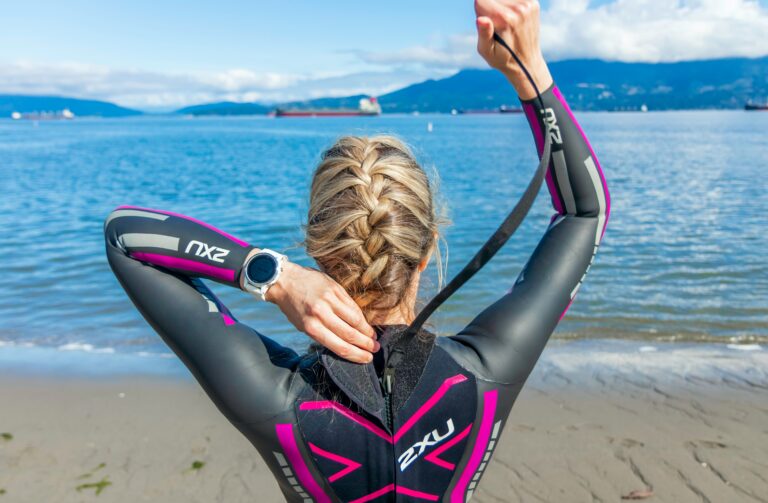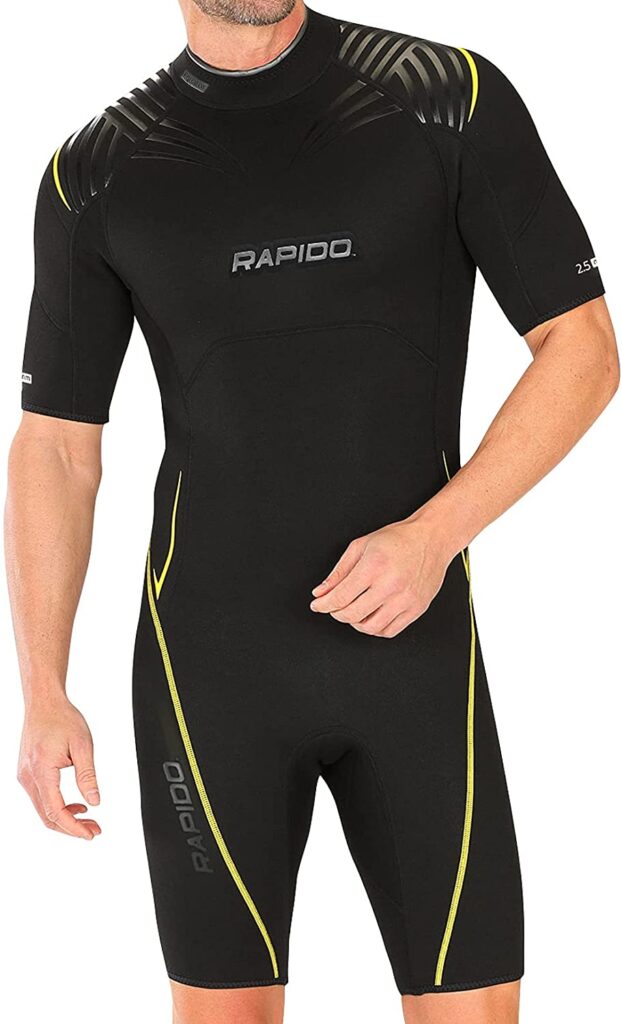One of the most important decisions you make when planning a snorkeling trip is what kind of wet suit to wear. The wrong choice can lead to an uncomfortable and even downright dangerous experience, so it’s worth taking some time to decide which wet suit is right for you. In this article, we will cover everything you need to know about choosing the best snorkeling wet suits on the market today, including how they work, what makes them different from each other, and much more!
Table of Contents
What is a wetsuit and what is the purpose
A wetsuit is a piece of neoprene with sleeves and legs, which you wear to keep warm when you are in cold water. It also protects the wearer from cuts during swimming because it prevents skin-on-skin contact with rough surfaces and other sharp objects. Wetsuits can be used for many different water activities, such as snorkeling, scuba diving, kayaking, and free-diving. Regardless of the activity, you are doing in the water, your comfort is always a priority. The most important thing to consider when choosing a wetsuit is what will make you feel comfortable and secure during your time in cold water.
Do I Need a Wetsuit
If you are snorkeling in warm water, such as the Caribbean with ocean temperatures above 60 degrees F, then a wetsuit is not necessary. In this case, you can wear swimsuits and rash guards or t-shirts made for swimming to protect your skin from sand and sunburns. This would be the case for most snorkeling in the United States.
However, if you plan to snorkel in water that is colder than 60 degrees F (16 C), then a wetsuit is likely necessary for your comfort and safety. Wearing the right type of wet suit can make all the difference between an enjoyable day on the water and one spent fighting hypothermia in a shivering, miserable ball.
The different types of wetsuits and their characteristics
Before getting into the features, it is important to understand that there are three types of wetsuits on the market: full-body, partial, and fitting wetsuits.
Full-body wetsuit: Full body wetsuits are quite popular among snorkelers because they cover you from head to toe, and protect your skin from rough surfaces while you are on a snorkeling trip. They have quite a few advantages, mainly because they offer full protection against cold water, which is why so many people love them.
Half body wetsuit: These are not as popular among snorkelers but they do have their own advantages and disadvantages over a full-body wet suit. This wetsuit covers the torso and arms but leaves legs exposed to current. They are usually made of thinner material than full-body wetsuits because they don’t need the same amount of thermal insulation.
Sleeved suit: A sleeved suit is almost exactly like a sleeve snorkeling shirt that you wear on land and it’s usually made of a thinner material than the full bodysuit. Sleeved suits are best suited for tropical waters and low-current areas (the Caribbean, Thailand) because they let water flow freely over the arms and thus minimize heat loss through convection.
#Rash guards: A rash guard is also known as a sleeved shirt, and it’s one of the best snorkeling wet suit options for sunny tropical waters because they are made from ultra-light materials designed to keep you cool, dry, and protected in warmer waters.
A rash guard is a type of long sleeve wetsuit that is made for surfers and divers who spend time on their boards or underwater to avoid chafing and rashes. They are generally shorter than most wetsuits to allow for mobility when riding waves or diving underwater.
Features to consider in your wet suit for snorkeling
There are many reasons why you should buy a wet suit for snorkeling. The most important thing when buying one is to make sure it fits correctly and that the quality of the materials is good enough that it will protect against cold water. It’s also very important to think about your comfort and preference before choosing because every person will have a different experience.
Hood: A hood is important because it will keep your head warm and dry. It’s best if it has a clip inside to hold the hair in place too, and a drawstring on the outside or at least on the neck so that you can adjust its tightness around your chin. Make sure the hood fits well and that it doesn’t move around.
Fit: How does your wetsuit fit? A good-fitting suit will be tailored to your body so that there are no loose spaces. It should also have adjustable drawstrings on the inside so that if your weight goes up or down during the season you can adjust it to fit accordingly.
Mesh lining: Mesh liners are great for snorkeling because they keep the entire suit from getting waterlogged and lowering its thermal protection capabilities. A wetsuit is designed to allow excess heat to escape, not hold onto it, so all the material except for the innermost layer should be mesh.
Seams: Another important thing that should not be overlooked is the seams of a wetsuit. Seams are what hold together all of the separate pieces so it’s really important to make sure they are strong and sturdy. A well-made suit will have double-stitched seams with at least one other row of stitching in between the rows. A tight and closed seam can be very efficient at preventing water from penetrating into the suit.
Cleaning and storing instructions
After you use your wetsuit for snorkeling, it’s important to clean and store it correctly because leaving it moist can lead to mold growth. You should always rinse the suit (preferably in freshwater) as soon as you can after using it so that any dirt or salt water is removed. It’s best to hang it in the sun to dry out so that mold doesn’t grow. After cleaning and drying, you should store your wet suit where there is low humidity (like a cool or cold place) to avoid even more unpleasant odors.
Best Wetsuits for Snorkeling
Rapido Shorty Snorkeling Wetsuits
Rapido Boutique Collection offers a variety of exquisite wetsuits and surf suits for men and women. Rapido embraces the fashion-forward spirit with their superior flex stretch neoprene construction, expertly made surf suit and high performance 2mm shorty wetsuit that is designed with flatlock stitched seams. If you are looking for something more comfortable to wear then they also have breathable shorty wetsuits with flatlock seams that are designed for soft stretch comfort.
Pros
- Thin neoprene for maximum flexibility
- Quick-drying and comfortable
- Reasonable warmth in the ocean water
- Lock in the perfect fit by ordering a size that is made to suit your body type
- Enjoy a unique and comfortable feeling with thick yet strong stitching
- Be able to work on water activities without any worries of heat escape
Cons
- Small leaks could happen through the zipper
In Summary
In this article, we covered everything you need to know about choosing the best snorkeling wet suits on the market. If you are in a hurry and just want some quick tips for buying your next suit, here is what we recommend:
When possible go with neoprene as it will provide more warmth than nylon or polyester;
If there isn’t a size that fits perfectly, order one size up so it can be cinched tight around your waist and buttock area (just don’t forget to account for how much saltwater weight gain might happen during an outing); And lastly remember that even if two different sizes fit well when dry, they may not feel comfortable once full of salty water.


